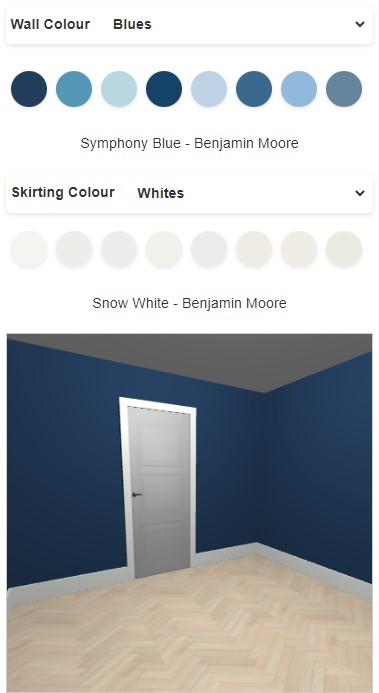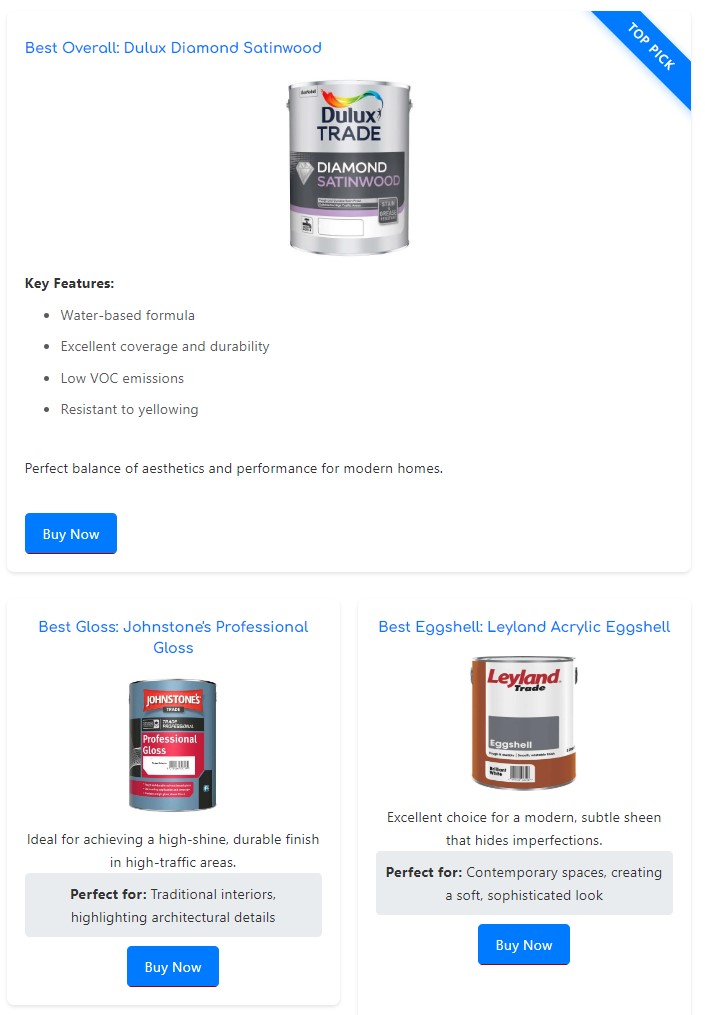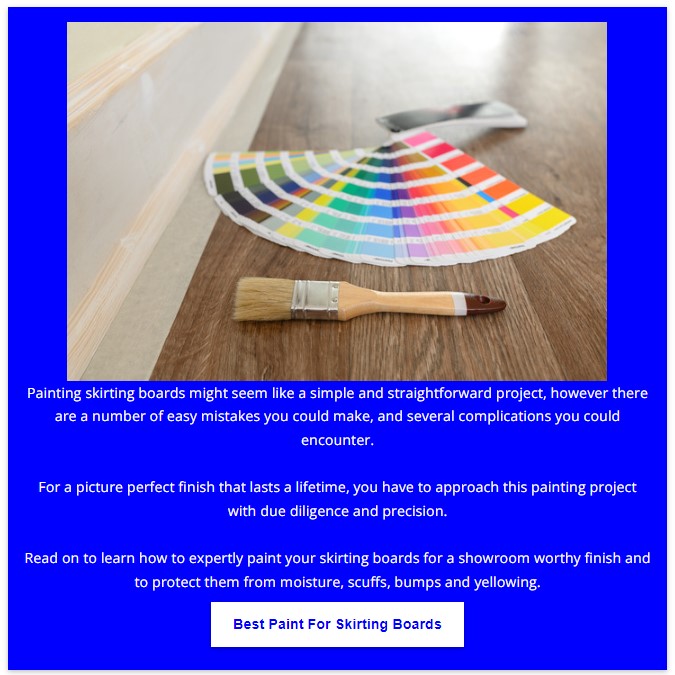
How To Gloss Skirting Boards | DIY Guide | Glass Finish
Posted by Skirting World on 25th Jul 2024
How To Gloss Skirting Boards: A Step-by-Step Guide
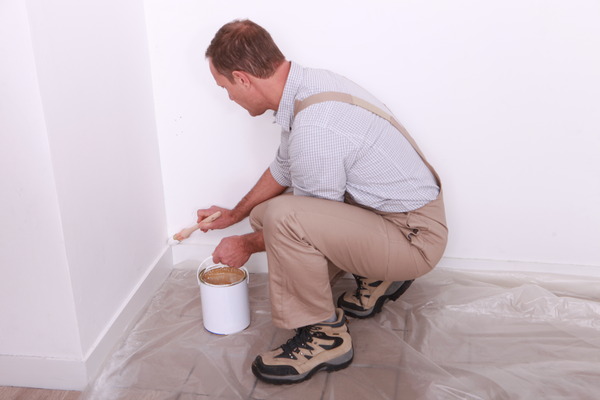
Even professional decorators struggle to achieve a high-quality gloss finish on interior trims. This guide provides practical tips and clear instructions to help you achieve a smooth, durable gloss finish on skirting boards that bounces light around your room and gives off a perfect sheen in modern and contemporary interior spaces.
Preparation
Proper preparation is crucial for achieving a smooth and durable finish. Follow these steps:
-
Assess and Repair
If painting old skirting boards, check for damage. Fill any holes or cracks with wood filler and let it dry completely before sanding. This ensures a smooth surface for painting and prevents imperfections from showing through the gloss.
-
Clean Thoroughly
Use a trisodium phosphate (TSP) solution to clean older skirting boards. This removes grime, grease, and other residues, improving paint adhesion. Ensure the boards are completely dry before moving to the next step.
-
Sand the Surface
Start with 120-grit sandpaper to remove old paint and smooth out rough areas. Then, use 220-grit sandpaper for a fine, smooth finish. Use a sanding block to ensure even pressure and avoid over-sanding, which can damage the wood.
Sanding not only smooths the surface but also creates tiny grooves that help the primer and paint adhere better.
-
Remove Dust
Use a tack cloth to eliminate all sanding dust. This step is essential for a smooth paint surface. Dust can create bumps and imperfections in the final gloss finish.
A vacuum with a brush attachment can help remove dust from crevices and corners effectively before using the tack cloth.
-
Protect Surroundings
Apply painter's tape to protect walls and floors. Press the tape down firmly to prevent paint from seeping under. Use drop cloths to cover the floor and any nearby furniture.
Remove painter's tape while the paint is still slightly wet to avoid peeling off any dried paint along with the tape.
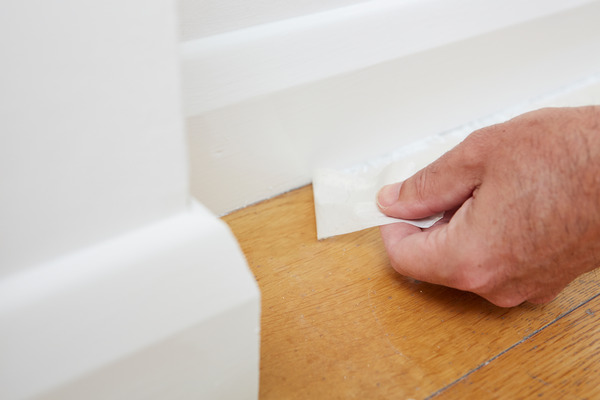
Materials Needed
High-Build Primer
Oil-Based Gloss
Synthetic Bristle Brush
Fine-Grit Sandpaper
Step-by-Step Guide
-
Apply Primer
Use a high-build primer with long, smooth strokes. This will create a uniform base and enhance the final gloss finish. Allow the primer to dry completely before sanding lightly with fine-grit sandpaper.
A high-build primer is thicker than regular primer, filling in small imperfections and creating a smoother surface for the topcoat.
-
Load the Brush
Dip the brush about one third of the bristle length into the paint and tap off the excess paint without wiping. This ensures the brush is loaded evenly, preventing drips and achieving a smoother application.
Using a quality synthetic bristle brush designed for oil-based paints will give a smoother finish and reduce brush marks.
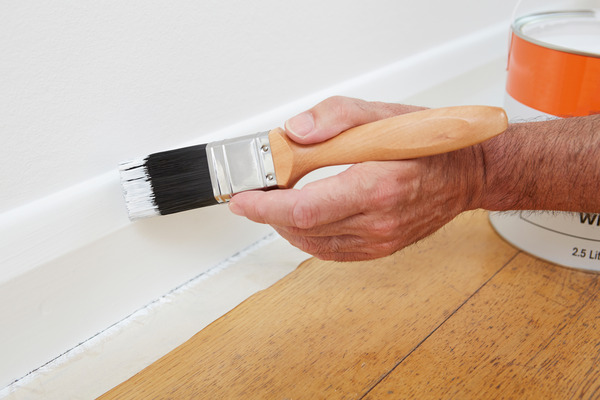
-
Paint Strokes
Start each stroke about one inch from the last. Apply gentle pressure, letting the brush expand slightly as you move along the skirting. This technique helps to blend each stroke seamlessly into the next.
For best results, paint in long, continuous strokes and always finish with a light, upward stroke to smooth out the paint.
-
Apply Coats
Use thin, even coats. Typically, two to three coats are needed for the best coverage and durability. Allow each coat to dry completely before applying the next.
Lightly sand between coats with 220-grit sandpaper to ensure a smooth finish and better adhesion for the next coat.
-
Final Finish
After the final coat is touch-dry, lightly sand with 400-grit paper and apply a thin topcoat for a smooth, professional finish. This topcoat will give the skirting boards a durable, glossy sheen.
Use a high-quality clear gloss topcoat for added protection and a deeper shine.
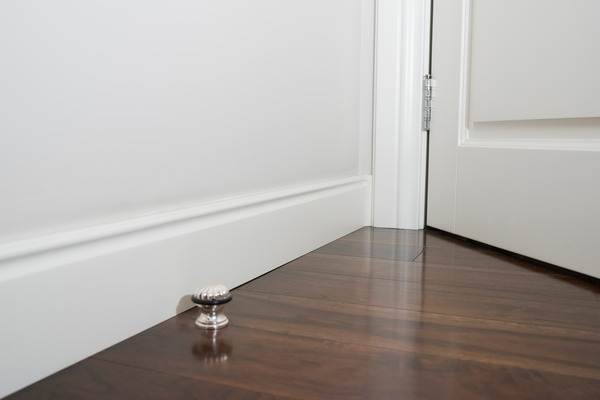
Advanced Techniques
Temperature Control
Keep the room temperature between 18-24°C (65-75°F) during application and drying for optimal results. Extreme temperatures can affect how the paint adheres and dries.
Thinning Paint
In hot conditions, thin the paint by 5-10% with the appropriate solvent to improve flow and reduce brush marks. This can help achieve a smoother finish.
Cutting-In
Use a high-quality angled brush for precise edges and corners, reducing the need for extensive masking. This technique ensures clean, sharp lines where the skirting meets the wall.
Ventilation
Ensure good airflow during and after painting to help the paint dry and reduce dust settling on wet surfaces. Open windows and use fans to keep the air moving.
Multiple Coats
Apply multiple thin coats instead of one thick coat to reduce drips and improve the final finish. This also allows each layer to dry properly, preventing runs and sags.
Common Issues and Solutions
Brush Marks
Problem: Visible brush strokes in the dried paint.
Solution: Use a paint conditioner to extend drying time, allowing the paint to level out. Apply thin coats with long, smooth strokes.
Keep a wet edge while painting to prevent overlapping marks and maintain a smooth finish.
Orange Peel Texture
Problem: Paint surface has a bumpy, textured appearance like an orange peel.
Solution: Thin the paint slightly and apply very thin coats. Ensure the room temperature is suitable for painting.
Use a foam roller for a smoother application and to avoid the stippling effect caused by standard rollers.
Yellowing
Problem: White or light-coloured gloss turning yellow over time.
Solution: Use water-based acrylic gloss instead of oil-based for whites and light colours, as they are less prone to yellowing.
Regular cleaning and ensuring proper ventilation can help maintain the original colour of your skirting boards.
Related Blogs and Tools
Frequently Asked Questions
How long does gloss take to dry on skirting boards?
Gloss paint typically takes 6-8 hours to dry to the touch. However, it is recommended to wait 24 hours for the paint to cure completely before applying a second coat or subjecting it to heavy use.
How to re-gloss skirting boards?
To re-gloss skirting boards, first clean and sand the existing gloss to create a smooth surface. Apply a primer if necessary, then follow with one or two coats of gloss paint, allowing each coat to dry thoroughly before applying the next.
How to protect carpet when glossing skirting boards?
To protect the carpet when glossing skirting boards, use painter's tape to mask the edges of the carpet along the skirting boards. Press the tape down firmly to prevent paint from seeping under. Additionally, use drop cloths to cover the carpet and surrounding area.
How much gloss is needed to paint skirting boards?
The amount of gloss needed to paint skirting boards depends on the length and height of the boards. As a general guideline, one litre of gloss paint can cover approximately 12 square meters with one coat. Measure the total area of your skirting boards to determine the amount required.
How to gloss skirting boards that are already painted?
To gloss skirting boards that are already painted, start by cleaning and lightly sanding the existing paint to ensure good adhesion. If the current paint is in poor condition, you may need to strip it off completely before applying a primer and new gloss paint.

